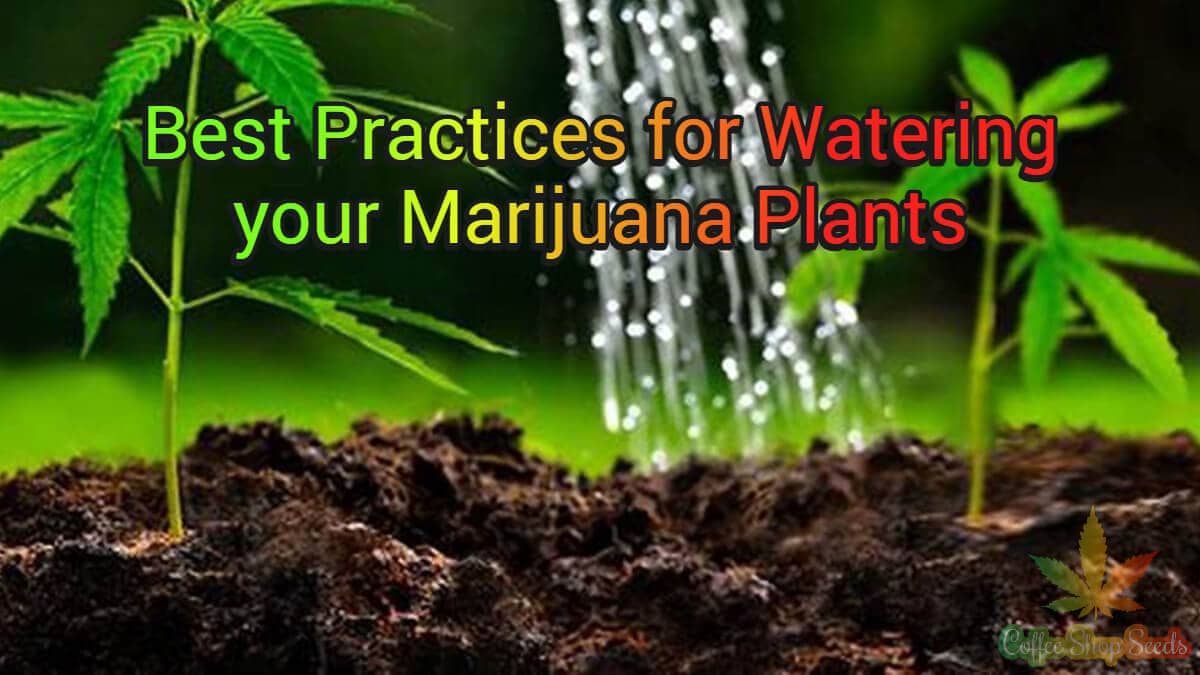Introduction:
To grow healthy and thriving marijuana plants, knowing how to water them properly is essential. Each plant has unique needs based on its size, stage of growth, and the environment it’s in. Over-watering or under-watering can have significant effects on plant health, so getting the balance right is crucial.
Watering methods can vary, and the choice largely depends on your growing setup and personal preference. From traditional manual watering to modern drip irrigation systems, selecting the right technique plays a big role in how well your plants develop. Understanding these methods can make a noticeable difference in plant health and yield.
In addition to methods and timing, water quality significantly affects plant growth. Factors such as pH levels and the type of water used contribute to the overall success of your cannabis cultivation. By enhancing water quality and scheduling efficiently, you support your plants’ needs, helping them to flourish.
Understanding the Water Needs of Marijuana Plants
Watering marijuana plants properly is crucial for their health and productivity. The water requirements vary depending on several factors, including plant size, growth stage, and the surrounding environment. Younger plants, like seedlings and clones, require less water compared to mature plants. As the plants grow and their root systems develop, their water needs increase.
Environmental factors also play a big role. Temperature, humidity, and light conditions can affect how much water the plants require. In hotter and drier conditions, plants will need more frequent watering to maintain hydration. In contrast, cooler and more humid environments might mean less frequent watering is necessary.
Recognising the signs of over-watering and under-watering helps manage these needs. Over-watered plants often exhibit yellowing leaves that feel droopy and soft. The soil might feel consistently wet, and you may notice slow growth. On the other hand, under-watered plants will have wilting leaves that feel dry and brittle. The soil will be dry to the touch, and the plant’s growth may stall. Understanding these signs allows timely adjustments to keep plants well-hydrated.
Choosing the Right Watering Method
Several watering methods cater to different grower needs, each with its own advantages and drawbacks. Manual watering is the simplest method, involving watering by hand with a watering can or hose. This method offers control over how much water each plant receives but can be time-consuming, especially for larger gardens.
Drip irrigation provides a more automated solution, delivering water directly to the plant base through a series of tubes and drip emitters. This method conserves water by reducing waste and ensuring even distribution. However, it can be costly to set up initially and may require maintenance to avoid clogs.
Self-watering systems, like wick systems or reservoirs, use capillary action to supply water from a reservoir directly to the plant roots. These systems are low maintenance and great for small setups or plants prone to drying out. On the downside, they can lead to over-watering if the water supply is not monitored.
To choose the best method, consider the size of your grow space, the number of plants, and your availability to tend to the garden. Manual watering suits small-scale growers who prefer hands-on management. Larger operations might benefit from the efficiency of drip irrigation, while self-watering systems offer a balance for medium setups. By understanding each method’s benefits and limitations, growers can tailor their approach for optimal plant health.
Timing and Frequency for Optimal Hydration
Watering schedules are crucial to the health of marijuana plants. The right schedule ensures plants get enough water without excess that can lead to issues. During the seedling phase, plants need frequent, small waterings. As they grow and enter the vegetative stage, they require more water, though less often, as their roots become established.
Flowering plants need careful watering to avoid disturbing the buds. The soil should be allowed to dry slightly between waterings to prevent root rot. A good rule of thumb is to water when the top inch of soil feels dry to the touch. This indicates the soil has enough time to oxygenate, reducing root issues.
Keep the light cycle and environmental factors in mind. Watering early in the day gives the plants time to absorb moisture and prevents excess humidity at night, which can cause mould. Soil composition and pot size also affect frequency, so adjust based on whether your soil retains moisture or drains quickly. Paying attention to these elements ensures water reaches the roots efficiently.
Enhancing Water Quality for Better Growth
Water quality is a cornerstone of successful cannabis cultivation. Keeping pH levels in check is essential, as it affects nutrient absorption. The ideal pH for cannabis plants is between 6.0 and 7.0 in soil and slightly lower, around 5.5 to 6.5, in hydroponic systems. Using a pH meter or test strips can help you measure and adjust these levels accurately.
Rainwater and filtered water are often better than tap water, which can contain chlorine and other additives that might harm plants. Collecting and using rainwater takes advantage of its natural pH balance and lack of contaminants. For those using tap water, letting it sit out for 24 hours can help dissipate some of the chlorine before use.
Additives can further enhance water quality, promoting plant growth. Nutrients help fulfil the plant’s dietary needs, while conditioners can improve soil structure and microorganism health. Consider these enhancements based on your plant’s specific growth phase and needs. By focusing on water quality, growers support healthier plants and more productive growth cycles.
Conclusion
Mastering the art of watering marijuana plants involves understanding their unique needs and the best practices to meet them. From recognising water needs and choosing effective watering methods to mastering timing and ensuring high water quality, each step plays a critical role in plant development. Getting these elements right not only boosts growth but also strengthens the plants against potential issues.
For those passionate about growing quality cannabis at home, Coffee Shop Seeds provides a remarkable selection of premium marijuana seeds in the UK. Pairing these seeds with the watering tips in this guide will help you achieve a successful, thriving garden. Contact us today and Explore our range and take your cultivation experience to the next level with seeds that promise both variety and quality.


